| Start of section
Production, amateur Radio amateurs Aircraft model, rocket-model Useful, entertaining |
Stealth Master
Electronics Physics Technologies Inventions |
Secrets of the cosmos
Secrets of the Earth Secrets of the Ocean Tricks Map of section |
|
| Use of the site materials is allowed subject to the link (for websites - hyperlinks) | |||
Navigation: => |
Home / Patent catalog / Catalog section / Back / |
|
INVENTION
Patent of the Russian Federation RU2104410
![]()
WIND ROTOR
The name of the inventor: Tatarenko Sergey Mikhailovich
The name of the patent owner: Tatarenko Sergey Mikhailovich
Address for correspondence:
Date of commencement of the patent: 1996.01.10
Use: in wind power for generating electricity and other industrial purposes. Essence: a windmill rotor containing a vertical hollow shaft with attached blades of a wind wheel, is equipped with a fairing covering the wind wheel from atmospheric precipitation and capable of automatically deploying towards the wind by means of an air rudder and an electric drive. To catch the wind flow in the fairing there is an inlet, through which the wind is directed to the wind wheel. The exhaust air leaves the rotor through the outlet of the fairing. The inlet and outlet parts of the fairing are made in the form of sockets, which are designed to increase the wind pressure on the blades of the wind wheel at low wind speeds, which increases the efficiency of the windmill. The inlet and outlet openings of the fairing are equipped with rotatable flaps capable of automatically controlling the wind pressure acting on the blades of the wind wheel at hurricane wind speeds
DESCRIPTION OF THE INVENTION
The invention relates to wind power, in particular, to wind turbine designs used to generate electricity.
Known rotor wind turbine, which contains a rotary wheel type Savonius rotor, equipped on the periphery of its enclosing ring with rotatable flaps, driven by a kinematic chain of power limitation [1].
The disadvantage of this rotor is its susceptibility to atmospheric precipitation, which prevents its use in severe climate conditions.
A rotor of a wind turbine is also known, comprising a vertical hollow shaft and a blade wind wheel with horizontal disks fixed to the shaft and placed between them along the periphery by profiled blades mounted to rotate about their longitudinal axis [2].
The disadvantages of this rotor are the complexity of the design and low reliability.
The task of the invention is to increase reliability in any climatic conditions, simplify the design and increase the efficiency.
The essence of the invention lies in the fact that the windmill rotor comprising a vertical hollow shaft and an impeller wind wheel is provided with a fairing guiding the wind flow on the blades of the wind wheel, the inlet and outlet parts of the fairing for increasing the wind speed acting on the blades of the wind wheel are made in the form of funnels; For automatic orientation the fairing is equipped with an air rudder and an electric drive; For active orientation, the inlet and outlet openings of the fairing are provided with rotatable flaps capable of automatically controlling the wind force acting on the blades of the wind wheel.
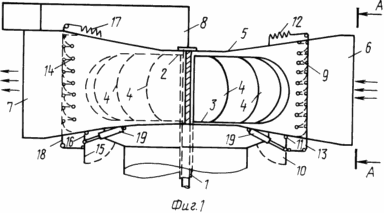 |
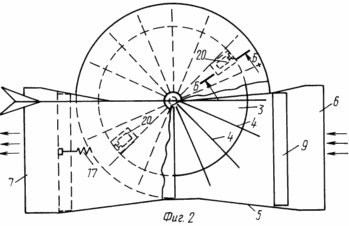 |
|||
| ||||
In Fig. 1 shows the rotor of a windmill, general view; FIG. 2 is a side view of FIG. 1; FIG. FIG. 3 is a view similar to A-A of FIG. 1; FIG. FIG. 4 is a cross-sectional view taken along line B-B of FIG. 2. FIG. FIG. 5 is a view along the BB of FIG. 4. FIG.
The rotor of the windmill contains a vertical hollow shaft 1, a wind wheel with horizontal disks 2 and 3 fixed to the shaft, and blades 4 arranged between them, a fairing 5 with an inlet 6 and an outlet 7. On the fairing 5, an air steering wheel 8 is fixed. The inlet 6 is provided with rotary Flaps 9 that are activated automatically from the wind pressure to the sail panel 10 fixed to the axis 11. The sail panel 10 is connected to the spring 12 by a cable 13. The inlet 7 is provided with rotatable flaps 14 which automatically actuate from the wind pressure to the sail panel 15 fixed to the axle 16 And connected to the spring 17 by a cable 18. The active rotation of the shutters 9 and 14 is carried out by hydraulic pushers 19. The active orientation of the fairing is carried out by electric drives 20, the gears 21 of which are engaged with the ring gear 22 of the fairing 5. The area of the openings is 6.7 times the blade area 4. The inlet and The outlet part of the fairing 5 is made in the form of a bell.
THE WIND ROTOR WORKS AS FOLLOWING
The wind, acting on the air rudder 8 of the fairing 5, unfolds it by the inlet 6 towards the wind. The active orientation of the fairing 5 is carried out by the command of the electronic windmill post coming to the electric drives 20, the gears 21 of which, rotating in one direction or the other and acting on the teeth of the crown 22, rotate the fairing 5, eliminating the inaccuracy of the wind direction by the steering wheel 8. In addition, the electric actuators 20 Serve to cancel the inertial rotational vibrations of the fairing 5 arising from the action of alternating wind on the air wheel 8. The wind flow, passing through the fairing inlet 6, acts on the blades 4 of the wind wheel, creating a working force on the shaft 1. The exhaust air leaves the rotor through the outlet 7. The socket shape of the inlet and outlet parts of the fairing 5 contributes to an increase in the speed of the air flow acting on the blades 4 of the wind wheel, which increases the power of the windmill at low wind speeds. In case of a hurricane wind, when the force on the shaft exceeds the maximum working load on the rotor, the automatic shutters 9 automatically decrease, which reduce the wind flow acting on the wind wheel. To drive the rotary shutters of the inlet port 6, there is a sailing panel 10 which, under the influence of a hurricane wind, rotates on the axis 11, creating a force in the cable 13, a stretching spring 12 and turning the shutter 9 at an angle corresponding to the wind force. When the wind speed is reduced to a normal value, the spring 12, acting by means of the cable 13, returns the rotary shutters 9 to the horizontal open position. The active rotation of the dampers 9 is carried out by a hydro-pusher 19, which simultaneously acts as a shock absorber in the case of a sudden change in wind speed.
To prevent wind from entering the rotor through the outlet opening 7 and spinning the wind wheel in the direction opposite to the working one, for example in air vortices, the rotary shutters 14 automatically shut off that close the outlet 7 when the wind is exposed to the sail panel 15. Turning on the axis 16, The panel 15 by means of a cable 18 by the rotary shutters 14 closes the opening 7. When the wind head stops at the outlet side, the spring 17 returns the rotary shutters 14 to the open horizontal position. For the active rotation of the shutters 14, a hydraulic pusher 19 serves. The fairing 5 serves as a cover for the windmill rotor from atmospheric precipitation.
CLAIM
A windmill rotor comprising a vertical hollow shaft and a blade rotor, characterized in that it is provided with a fairing guiding the wind flow on the blades of the wind wheel, the inlet and outlet parts of the fairing for increasing the wind speed acting on the blades of the wind wheel are made in the form of sockets, for automatic orientation The fairing is provided with an air rudder and an electric drive for active orientation, the inlet and outlet openings of the fairing are provided with rotatable flaps capable of automatically controlling the wind force acting on the blades of the wind wheel.
print version
Date of publication 01/18/2007



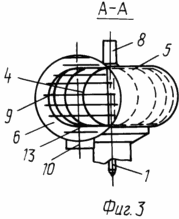
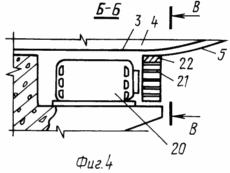
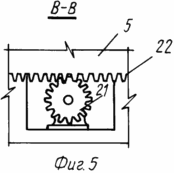

Comments
Commenting on, remember that the content and tone of your message can hurt the feelings of real people, show respect and tolerance to your interlocutors even if you do not share their opinion, your behavior in the conditions of freedom of expression and anonymity provided by the Internet, changes Not only virtual, but also the real world. All comments are hidden from the index, spam is controlled.